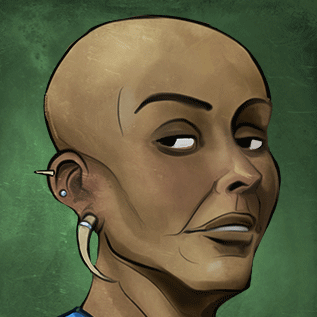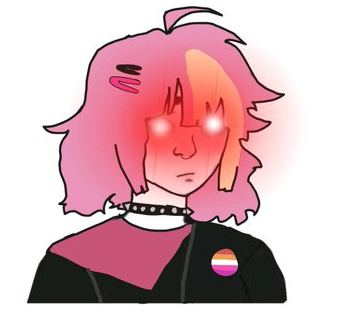(sorry if I'm being silly, I'm a noob in all things arts and literature)
I was reading some stuff and realized that, when hope is the matter, the symbols are usually variations of these: nature awakening (flowers blooming, birds singing...), sunrise, sun coming from behind clouds, illuminated subject in a dark ambient.
As a mental exercise, I tried to remember/think of other images that are used or could be used to convey hope, but I can't think of any.
Have you ever written or read anything that uses other symbols to convey similar feelings as the images mentioned?
The reason those are common symbols is that they exploit already extant associations that people have. People associate Spring with renewal, renewal is hopeful, therefore spring is symbolically hopeful. It takes almost no work on the part of the author to make this happen.
However, an author can also create symbols by creating new associations. Silly example here, but the main character is a child dealing with the death of his parents. His uncle gives him a bag of peanuts as a simple act of kindness. It's very emotional, big moment in the book. At the end of the book after many troubles he finds himself in a peanut field
I think I see these more as 'motifs that are used a lot' instead of seeing them as natural symbols of renewal because I live in a place that has no spring, only summer and winter. Flowers are around anytime, depending on what plants are close to you, and trees don't lose their folliage. I've never actually experienced how the transition from winter to spring feels like, so the association is naturally lost on me, other than being code for 'hope', 'new life' etc
Funny enough that's exactly what I'm talking about. Even though you don't have personal associations between those things, being exposed to these symbols has created an association between the two, such that you recognize flowers as symbolically hopeful without associating flowers with renewal
It's undoubtedly weaker, though. Instead of a feeling, it's simply conceptual.
There's not a lot of representation of local symbols where I live, so I don't usually associate with a lot of it. But recently I saw a very simple painting of a cashew tree full of beautiful red fruit (they're native of where I'm from) by the sea side and it made me feel so happy and cozy! No european or american painting ever made me feel like that before, and I doubt anyone from those places would feel as I did when seeing it.
And now that I think about flowers, I realized that most flowers we have here are from fruit trees. While seeing them don't make me feel "new life", they do make me feel that I'm expecting something good in the immediate future, a delicious fruit in the weeks to come 😋
I guess the lesson to take here is to explore the world immediately around you, that will create the strongest bonds with the art if your objective is to connect to the people around you
I think that's a great takeaway. As you've pointed out, there are very few symbols that are truly universal because the associations people have are determined by their environment, culture and so on. I would say also that if you are a writer or an artist of any kind you have the power to create those associations. A lot of powerful art is created through an symbols that a viewer/reader may not have expected or even thought of
I read that the buttigieg campaign used the song High Hopes as a subtle symbol of hope on the campaign trail
This is the most cursed possible answer to this question. Nothing will top this.
Keeping a fire alive is common, proverbial or literal.
Or when wives go out to a Widows Peak every day in anticipation of a husband that had to sail away. Although, maybe that's more a faith thing.
In the Dark Tower series
spoiler
Roland's situation is revealed to be cyclical, and yet we feel hope when he repeats again but with the horn of elder.
Keeping a fire alive
My favorite use of this motif is in No Country for Old Men (the movie, I haven't actually read the book). Sheriff Bell, trying to reconcile faith in the Christian God with the seeming random cruelty of his world, speaks of dreaming that his long-dead father is sitting just up a path in the dark, waiting for him, a fire lit to guide the way. And then he wakes up, which I take to mean he comes to believe that his dream was just a dream, his father is not lighting the way to God, God is not there and never was— which dovetails nicely with a lesson Bell learns from his uncle earlier in the film about the world having always been just as cruel as it is in Bell's time.
Keeping a fire alive is common, proverbial or literal.
The Road by McCarthy has the child keeping the fire.
Other people have already added some great stuff :)
Juxtaposition is another way, such a candle staying lit in a very dark place, or a tree growing out of a rocky cliff, or a single flower in a field of ash.
Fragility is another way, often times it can be natural, such as protecting a child, but generally if you can get a reader invested in the wellbeing of something, and then handle the something well, you can inspire hope that the thing will be safe and unbroken. You could use an old artifact being returned to a village, for example
Snowpiercer has the weirdest symbol of hope I've ever seen lmao
train movie spoiler
Dude represents the outside world (communism) being viable by having the protagonists stumble on a fucking polar bear
Like sure, it's proof that there's a big enough biosphere to sustain a bear, but now for the last decade you have people going "lol they characters die at the end bc bear eat them" which wasn't supposed to be the point at all
People smiling, laughing, and eating during brunch. Things are back to normal now.
The closest thing is I used Rei Ayanami (literally) & a stingray as a coping mechanism for a character against her abusive mother. Which I suppose is some type of hope symbol. IDK.
Conversation and laughter in the background is something I've seen used before but mostly in films I think. It kinda fits with sunrise but any sort of warm motifs like things thawing or cold leaving or candles being lit (but not burning out) convesy similar ideas of spring and new days. Births or marriages near the end of a piece are traditionally used as a sign that there is a good ending. Not my jam, but there are lots of religious symbols associated with similar things like doves and lambs for christianity or just forgiveness in general.



